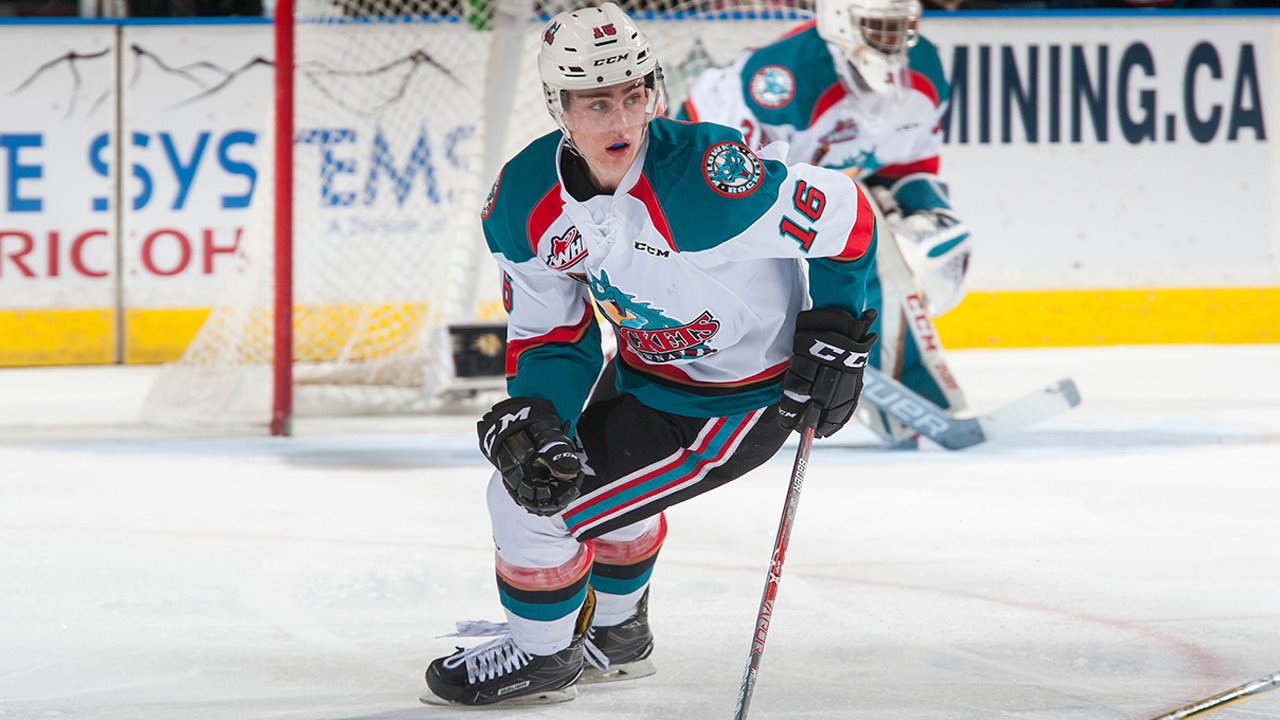VANCOUVER — There are three sets of initials that Kole Lind draws on his hockey sticks. ‘LS’ for Logan Schatz. ‘XL’ for Xavier LaBelle. And if you can’t quite place those names, the third initials say everything: ‘HB’ for Humboldt Broncos.
Lind, the Vancouver Canucks’ terrific prospect from Shaunavon, Sask., was playing his second game as a pro for the Utica Comets last April 6 when the Broncos’ bus, on its way to a Saskatchewan Junior Hockey League playoff game, was sheared in half by a truck. Sixteen players and staff were killed.
Imagine getting that horrific news after a game while just starting what every player on that Humboldt bus had dreamed of: a career in professional hockey.
“I turned on my phone and my dad texted me, my buddy from Saskatoon texted me,” Lind, 19, said Monday at the Canucks’ summer development camp. “Everyone just saying they loved me. You have a heavy heart, first of all, but it just makes you more grateful to be able to play a game that you love.
“You’ve just got to play each game like it’s your last because you never know what’s going to happen. I still play for those guys every single day. I have some of their initials on my stick, so I think that’s just something I’ll keep in the back of my mind for the rest of my hockey career, and help me push through whatever adversity I have.”
Lind played summer hockey in Saskatoon with Schatz, the Broncos’ 20-year-old captain who was killed. He played minor hockey with LaBelle, an 18-year-old defenceman who was initially reported by authorities as dead, but survived despite a fractured skull, 20 broken bones and injuries to several organs. Lind also knows crash survivor Kaleb Dahlgren and he knew victim Evan Thomas.
In Saskatchewan, there are not six degrees of separation to anything, let alone hockey.
“There’s not really words to describe what happened,” Lind said.
After the tragedy, Lind was back in the Comets’ lineup the next night in Syracuse. In all, he logged six American Hockey League games after finishing a superb final season of junior in the Western Hockey League, scoring 39 goals and 95 points in 58 games for the Kelowna Rockets.
Years from now, Lind may remember his brief springtime in Utica, N.Y., for shaping his career. The Humboldt tragedy changed his outlook on hockey and how precious the chance to play the game is. And his difficult six games in the AHL told him how hard he will have to work to earn his career.
The power forward the Canucks selected three picks into the second round of the 2017 National Hockey League draft tore through junior as a 19-year-old but managed only a single assist for the Comets before coming out of the lineup for the AHL playoffs.
Ryan Johnson, the Comets’ general manager and head of the Canucks’ player development program, sees a different player at this camp than he did in April, and expects Lind to have evolved further by the time he goes to Vancouver’s NHL training camp in September.
“As development people, you can harp to them how difficult that step is (up to professional hockey),” Johnson said Monday. “He got to live it and taste it, and I think it changed Kole and his perception about what he needed to do to get ready for the next step. He’s had a huge summer so far. He’s been training, he’s been meeting the intensity that we’ve asked of him.
“Just seeing him walking into the building, he’s thicker, he’s more mature. You can see him becoming a man in front of you, so he’s an exciting player for us.”
The Canucks sent minor-league strength and conditioning coach Ken Hetzel to work with Lind in Saskatoon, where he trains and spends the summer. Lind lives with former NHL player Rich Pilon, with whom he billeted during midget hockey.
“It’s almost night and day,” Lind said of his conditioning now versus a year ago. “I’ve committed myself a lot to training and getting better this summer and being more powerful on the ice. I think it’s starting to show now; give me another two months and we’ll see where things go from there.”
His AHL experience obviously left an impression.
“I don’t think you can prepare for it until you get there,” Lind said. “You think, obviously, it’s going to be faster and you want to try to play a faster game. But it was a huge step for me. There were things I had to fix in my game before I worried about contributing, and that didn’t come very much in the minors.
Hopefully, it will come next year.
“At times, I almost found myself getting pushed around a little bit. Even in the minors. So I think that really was an eye-opener for me.”
Lind hasn’t had nearly the attention that fifth-overall pick Elias Pettersson of Sweden has received since the 2017 draft, and will now also be overshadowed by 2018 first-rounder Quinn Hughes, the dynamic defencemen who missed the first day of development camp due to the flu.
But Johnson raves about Lind and the Canucks believe he will be a core piece in their rebuild. His 1.64 points per game in his draft-plus-one season represented a 32 per cent increase for Lind on the previous year. He is fast and skilled but possesses what Johnson admiringly calls a “nastiness” to his game that the Canucks love.
It’s why Vancouver general manager Jim Benning, before the winger slipped to the Canucks on draft night, was caught on tape asking aloud: “Why isn’t anyone taking Kole Lind?”
It was a good question then, an even better question now.
[relatedlinks]
